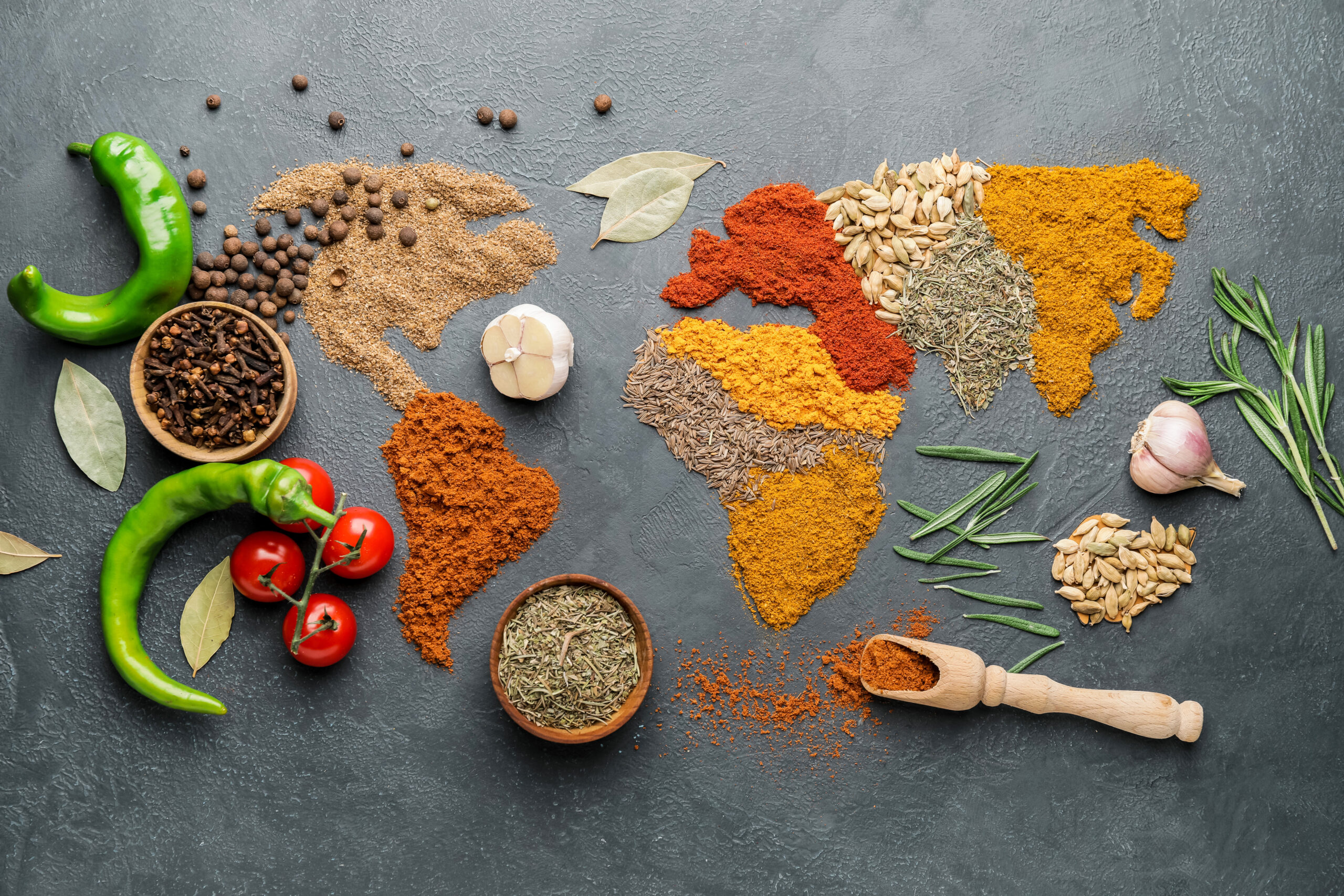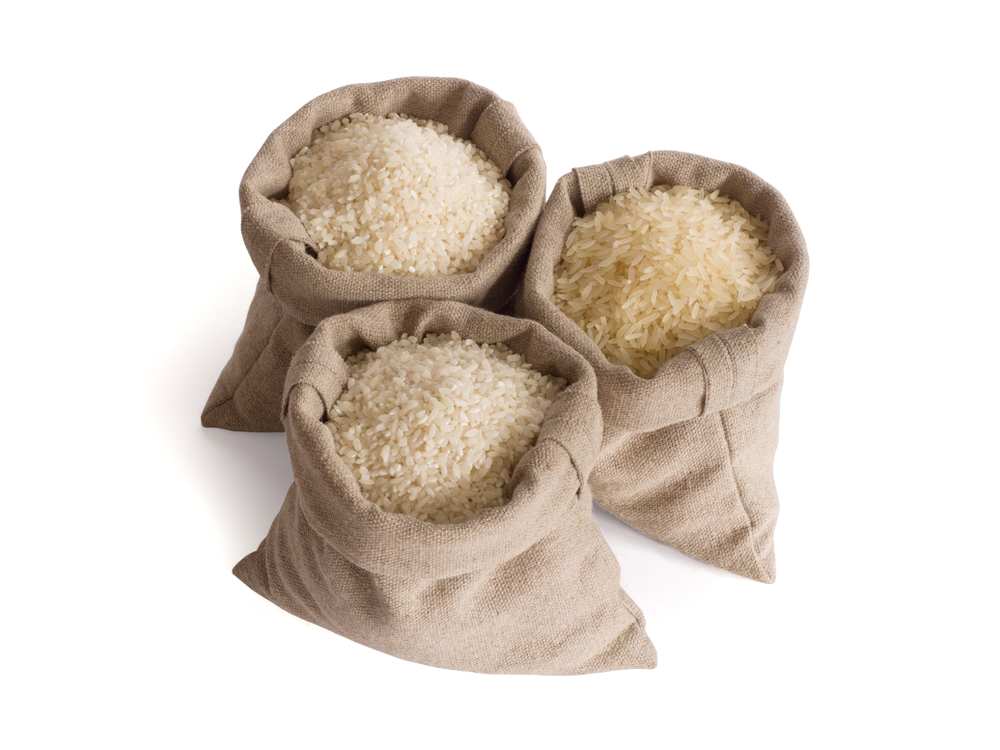The foods we enjoy today are often the result of centuries-old trade routes, surprising exchanges, and unexpected discoveries. From spices that sparked voyages to exotic ingredients now found in everyday kitchens, global food trade has shaped our modern diets in ways that might surprise you. Behind many of your favorite dishes lies a story of how one nation’s staple became another’s culinary treasure. Check out some fascinating facts about how global food trade continues to influence what we eat today.
Contents
- 1 The Columbian Exchange Revolutionized Global Cuisine
- 2 The Spice Trade Led to Exploration and Colonization
- 3 Coffee’s Journey from Ethiopia to Every Corner of the Globe
- 4 Chocolate Was Once a Sacred Drink in Mesoamerica
- 5 Tea Became a Global Sensation Thanks to British Influence
- 6 Bananas: From Exotic Luxury to Everyday Staple
- 7 The Rise of Sushi: From Japanese Tradition to Global Trend
- 8 The Global Journey of Pasta: From China to Italy to the World
- 9 The Global Beer Trade Transformed Local Economies
- 10 Rice Became a Lifeline for Global Populations
- 11 Avocados’ Meteoric Rise to Global Superfood Status
- 12 The Potato Famine Changed Global Agricultural Practices
- 13 The Global Demand for Quinoa Revolutionized Andean Agriculture
- 14 Vanilla: The World’s Most Labor-Intensive Spice
- 15 More From RetailShout
- 16 18 Aldi Cleaning Supplies That Get the Job Done on a Budget
- 17 15 Healthy Dessert Ideas That Won’t Compromise Flavor
The Columbian Exchange Revolutionized Global Cuisine

The Columbian Exchange, which began after Christopher Columbus’s voyages, is one of the most significant events in food history. It introduced staple crops like potatoes, tomatoes, and maize from the Americas to Europe, Asia, and Africa. In return, Europe brought sugarcane, wheat, and livestock like cows and pigs to the Americas. This exchange shaped the diets of civilizations across the globe, transforming agriculture and cuisine forever.
The Spice Trade Led to Exploration and Colonization

The desire for spices like cinnamon, nutmeg, and pepper sparked some of the earliest global trade routes. These highly valuable goods were once traded overland via the Silk Road, but European explorers sought faster sea routes. This pursuit of spices led to the discovery of new lands and established trade connections that spread exotic flavors across continents. The legacy of the spice trade is still visible in modern culinary traditions worldwide.
Coffee’s Journey from Ethiopia to Every Corner of the Globe

Coffee originated in Ethiopia, where it was first cultivated in the 9th century, but it quickly spread across the Arab world. By the 17th century, coffeehouses in Europe became popular social spaces, fueling the drink’s global rise. Today, coffee is grown in over 70 countries and has become a daily staple in diets across the globe. Its trade has influenced economies, cultures, and even global politics.
Chocolate Was Once a Sacred Drink in Mesoamerica

Before chocolate became a beloved sweet treat worldwide, it was a sacred drink for the ancient Maya and Aztec civilizations. They mixed ground cacao beans with water, chili, and other spices to create a bitter beverage used in religious ceremonies. When Spanish explorers brought cacao back to Europe, it was transformed into the sweetened chocolate we know today. The cacao trade fueled global demand for sugar and helped shape the world’s taste for sweets.
Tea Became a Global Sensation Thanks to British Influence

Tea originated in China over 5,000 years ago but became a global staple largely due to British influence. The British East India Company established a stronghold on tea trade in the 18th century, making tea a key part of British culture. Eventually, tea cultivation expanded to India and Sri Lanka, further spreading its global influence. Today, tea is the second most consumed beverage worldwide, after water.
Bananas: From Exotic Luxury to Everyday Staple

Bananas, native to Southeast Asia, were once considered an exotic luxury item when they first arrived in Western markets in the 19th century. Thanks to advancements in transportation and refrigeration, bananas became one of the most globally traded fruits by the 20th century. Today, bananas are a staple in many countries, particularly in the U.S. and Europe, with millions of tons traded annually. The rise of banana consumption also highlights issues around labor practices in producing countries.
The Rise of Sushi: From Japanese Tradition to Global Trend

Sushi, a traditional Japanese dish, was relatively unknown outside Japan until the 20th century. As Japan became more globally connected through trade and travel, sushi began appearing in Western markets in the 1970s and 80s. Its popularity skyrocketed, making it one of the most beloved cuisines in countries like the U.S. Today, sushi is an international food phenomenon, and the global demand for sushi-grade fish has reshaped marine industries.
The Global Journey of Pasta: From China to Italy to the World

Though pasta is often associated with Italian cuisine, its origins are believed to trace back to ancient China, where early forms of noodles were made. Through trade routes like the Silk Road, these noodles eventually made their way to Italy. Italians perfected pasta, turning it into a national dish, and as Italian immigrants moved across the world, they brought pasta with them. Today, pasta is a global staple, featured in a wide variety of dishes across cultures.
The Global Beer Trade Transformed Local Economies

Beer has been brewed for thousands of years, but its global trade has transformed local economies and drinking cultures. European colonists introduced beer to the Americas, and eventually, large-scale breweries began producing beer for global markets. Today, beer is one of the most widely consumed alcoholic beverages, with international brands dominating the market. The global beer trade has connected local ingredients and brewing techniques across continents.
Rice Became a Lifeline for Global Populations

Rice, native to both Africa and Asia, has become one of the most important staple crops in the world. Its ability to grow in diverse climates and feed large populations made it essential for the survival of many civilizations. Today, rice is a global commodity, with major exporters like China, India, and Thailand playing key roles in global food security. Its trade has shaped agricultural policies and international relations in numerous countries.
Avocados’ Meteoric Rise to Global Superfood Status

Avocados, native to Central and South America, were relatively unknown in global markets until the late 20th century. Thanks to their perceived health benefits, avocados gained immense popularity as a superfood, especially in the U.S. and Europe. This demand has reshaped agriculture in countries like Mexico, the world’s largest avocado exporter. The global avocado trade has also raised concerns over environmental impact and water usage in producing regions.
The Potato Famine Changed Global Agricultural Practices

The Irish Potato Famine of the mid-19th century dramatically affected global food trade and agricultural practices. Potatoes, introduced to Europe from the Americas, became a staple in Ireland, but the failure of potato crops due to disease led to widespread starvation. This tragedy prompted nations to diversify their agricultural crops to prevent similar dependence on a single food source. It also led to mass emigration, further spreading the potato’s popularity across the world.
The Global Demand for Quinoa Revolutionized Andean Agriculture

Quinoa, a grain native to the Andes region, has been a staple in indigenous diets for thousands of years. However, its global popularity soared in the early 21st century as it became recognized for its high nutritional value. The surge in global demand transformed quinoa into a major export for countries like Peru and Bolivia, altering traditional agricultural practices. While quinoa’s rise has benefited local economies, it has also raised questions about the sustainability of its production.
Vanilla: The World’s Most Labor-Intensive Spice

Vanilla, native to Mexico, is one of the most expensive and labor-intensive spices in the world. Each vanilla orchid must be hand-pollinated, a process that makes its production time-consuming and costly. As demand for vanilla increased, it became a valuable export for regions like Madagascar and Réunion. Today, the vanilla trade continues to shape agricultural economies, with synthetic alternatives emerging to meet global demand.
This article originally appeared on RetailShout.
More From RetailShout
11 Oldest Seafood Restaurants in the US You Can’t Miss

Seafood has been a favorite in American cuisine for centuries, and some of the oldest seafood restaurants still stand as a testament to that love. These spots not only serve up fresh and delicious seafood but also carry rich histories that make dining there an unforgettable experience. Read More.
18 Aldi Cleaning Supplies That Get the Job Done on a Budget

Aldi’s cleaning products offer the perfect combination of quality and affordability, making household chores more manageable. With options for every surface and type of mess, these supplies get the job done efficiently, saving you time and money. Read More.
15 Healthy Dessert Ideas That Won’t Compromise Flavor

Who says you have to choose between health and indulgence? With these healthy dessert options, you can have the best of both worlds. Read More.






